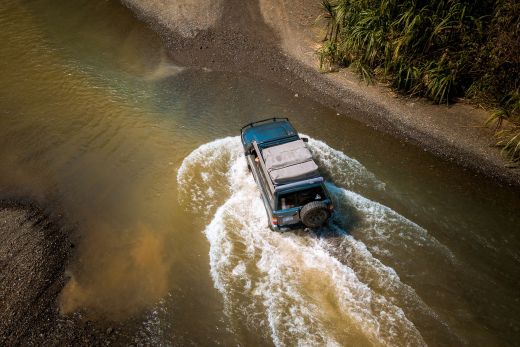Overlanding isn’t new, but it has become more popular in recent years. Whether it involves setting off on a six-month expedition or just a weekend jaunt, more and more outdoor enthusiasts are discovering the freedom to be had when you leave the highway and explore the backroads. Presumably, you’re reading this because you got wind of the trend and you now want to know what the fuss is about. It’s a good thing then that you’ve found one of the most comprehensive introductions to overlanding out there. Read on and you’ll learn all about what overlanding involves and what you need to get started.
What is overlanding?
Overlanding is a means of exploring wild and far flung places using some kind of off-road capable vehicle. This type of adventure typically involves camping off grid and requires a high degree of self-reliance – overlanders have to carry their own food, water, and supplies. If you think that this sounds a bit like car camping, you are half right.
How is overloading different to car camping
There are some similarities between car camping and overlanding, but there are also significant differences. Whereas car camping typically involves overnighting at campsites that can be assessed with a road (possibly including several miles of gravel road), overlanding usually involves venturing into the kind of remote and wild places that can only be reached by driving significant distances on unpaved roads, jeeps trails, and off-road terrain.
But the biggest difference between car camping overlanding is the objective and the kind of itinerary. While the focus in car camping is to spend time in a certain location (up to several days or even a few weeks), overlanding is all about journey, meaning that an itinerary is likely to have many destinations with significant distances between each. Given how remote many of these places are, overlanders are also more likely to camp off-grid, although many will also occasionally check into an established campsite or even a lodge when these are an option.
What are the attractions of overlanding?
There’s a lot about overlanding that’s attractive to outdoor enthusiasts, but these are the three main reasons that people hit the wide open dusty road.
Adventure
One of the biggest draws of overlanding is the opportunity to explore remote and wild places that would be hard to reach any other way. Whether it's the rocky deserts of Patagonia, the red dunescapes of the Outback, or the grassy plains of the African Savanna, overlanding allows adventurers to venture deep into wilderness areas.
Go-anywhere freedom
You can also get into many far flung places with an overland truck tour, but overlanding offers a distinctive advantage by giving you complete control of your journey. When you are driving yourself, you can decide on the itinerary, set the pace, and make last minute changes as you wish.
Self-reliance
Given how an overland itinerary can take you far from help, self-sufficiency is an essential part of overlanding. From flat tires and basic vehicle repairs to first aid and the purification of drinking water, overlanders have to be prepared to do it all themselves. For many adventurers, there’s much satisfaction to be had in this level of self-reliance.
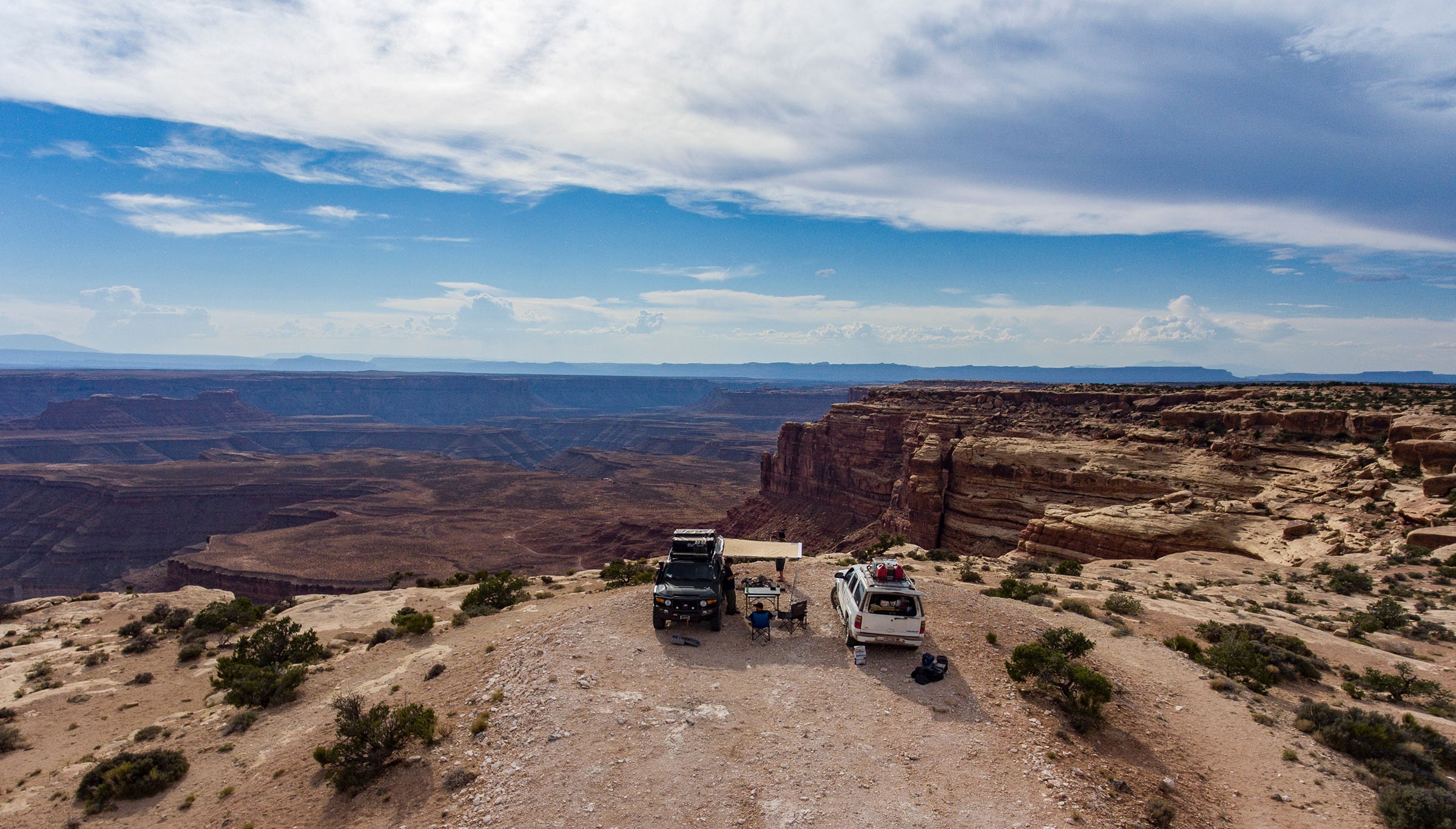
Necessary skills
Given the nature of the terrain and the focus on self-reliance, overlanding requires certain skills that the average weekend camper doesn’t need. But then there are also those wilderness skills that you will probably have already acquired if you are into backpacking and other adventure activities.
Planning and preparation
Besides simply linking places of interest, a properly planned overland route will also identify potential camping spots and places where you can refuel and resupply. Typically such a plan will include driving times and distances, border crossings, possible road closures, and alternative routes – details that will allow you to adapt your plan if you need to. Once you have an itinerary you can go about applying for visa, permits, a cross-border letter (if the vehicle is financed), and a carnet de passage (if needed).
Navigation
Dashboard GPS systems and mobile apps definitely make navigating easier than it was 30 years ago, but it would be a mistake to rely solely on technology. Besides the fact that devices can break and malfunction (or lose signal in the case of phones), printed maps and guidebooks can also include information not available on Garmin, OnX or Gaia. Of course, you will also need to learn how to orient yourself using a map and compass, but this is a worthwhile skill that can prove valuable in many outdoor activities.
Packing and loading
It’s important to pack a vehicle properly not only because you want to be space efficient but also because you need to limit the impact of the extra weight on your vehicle’s handling. To avoid making your vehicle top heavy and unstable, you should always aim to keep most of the weight as low as possible and between the axles while also ensuring that nothing can shift and cause an unexpected change in weight distribution. This means that it’s best to put lighter items on your vehicle’s roof rack (if you choose to use one) and put heavier items in the cargo bay.
Off-road driving
Depending on your itinerary, the off-road terrain covered on a trip could range from rock-strewn tails to muddy bogs and sandy river beds. Driving on these different surfaces often requires different approaches – skills that you probably don’t want to learn when driving a vehicle fully laden with gear and supplies. If your itinerary is going to include a significant amount of off-road driving, it would be a good idea to go on an off-road driving course and then practice on some local 4x4 trails before a big trip.
Vehicle recovery and repairs
When venturing far from help, you need to be prepared to deal with any problems yourself. If your vehicle gets stuck, you need to be able to get it back on solid ground, and if it breaks down or gets a punctured tire, you need to be able to fix it yourself or at least tow it to where it can be worked on by a mechanic (just one of many benefits to driving in a group). To do this, you will need the requisite equipment (spade, sand ladders, jack and tow strap) and know how to use it. This is all just another reason to enroll in an off-road driving course or hire an instructor.
Wilderness skills
If you are a seasoned outdoorsman, you will probably already have many of the skills needed to venture into remote wilderness areas. If, on the other hand, your outdoor skills are limited to fire making and camp cooking (the bare minimum for any camper), you will also need to learn how to choose a suitable backcountry campsite, how to collect and purify water from a natural water source, and how to dispose of human waste – among other leave-no-trace best practices.
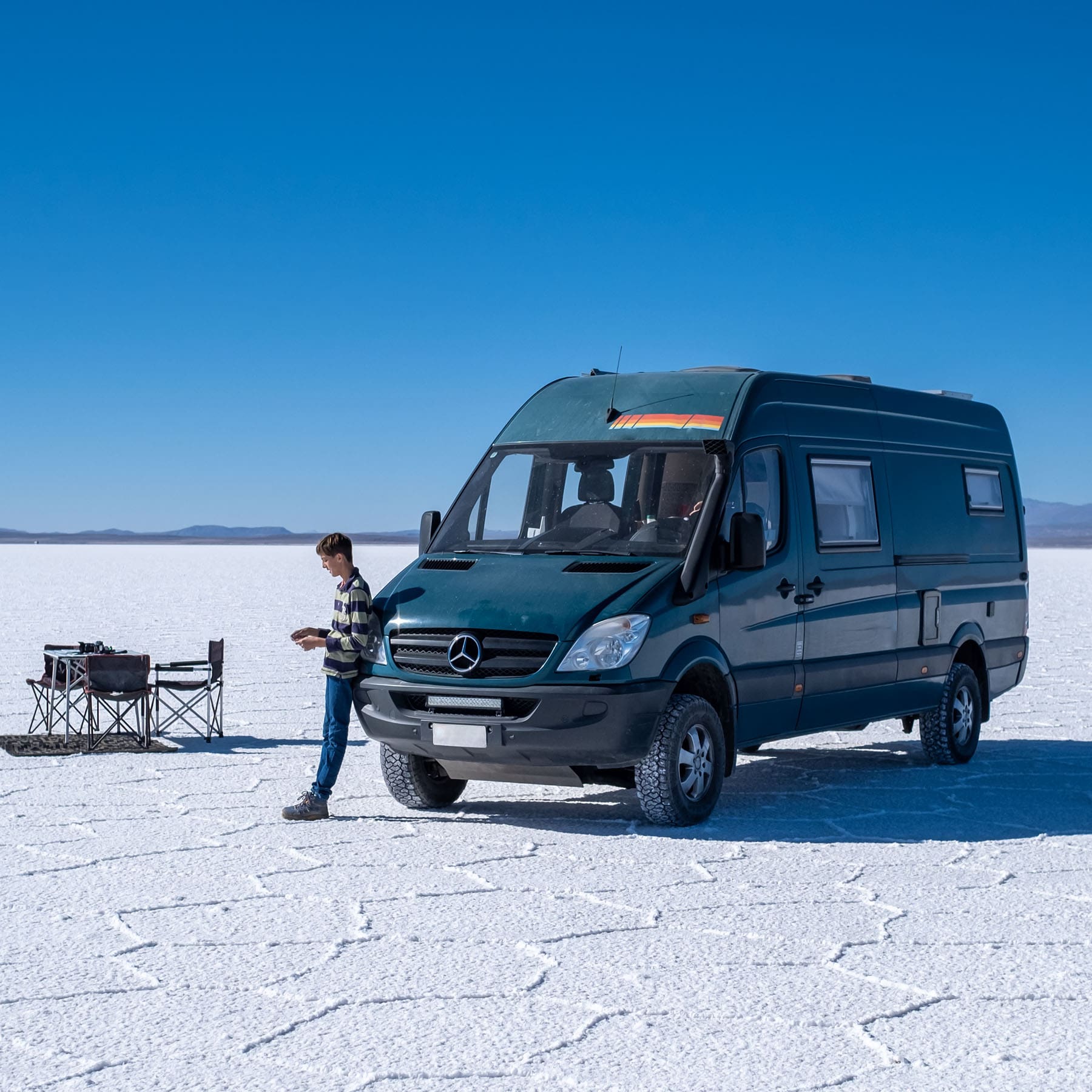
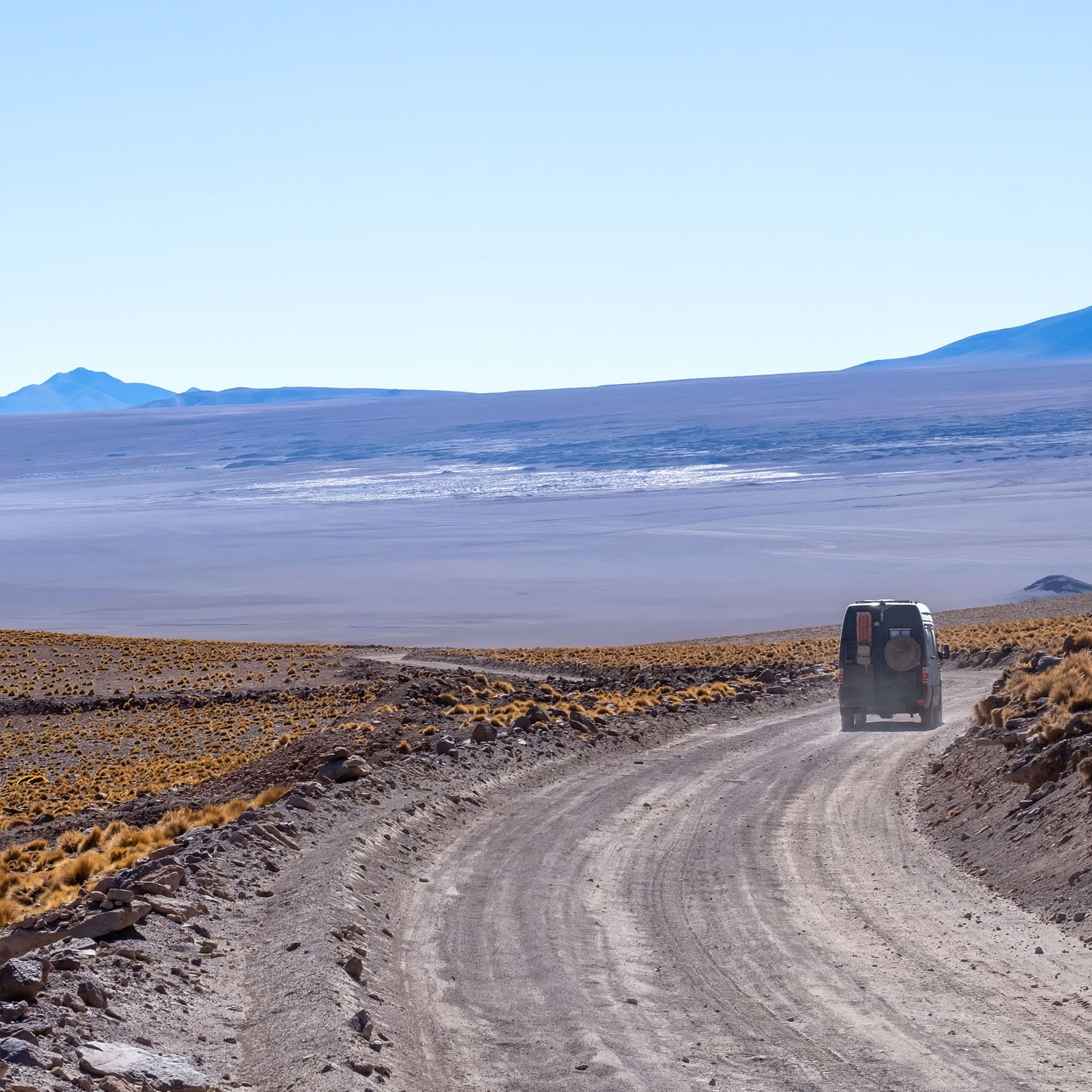
Vehicles for overlanding
Almost any vehicle with some off-road capability can be used for overlanding, but some vehicles make better overlanders depending on your needs. Besides off-road capabilities, you’ll also want to consider carrying capacity, reliability, availability of parts, and fuel economy before deciding on what you want in an adventure wagon.
Trucks
Trucks come in three sizes (mid-size, full-size and heavy-duty) and multiple configurations (single, extended or double cab), which makes this a very diverse category. And that’s before you consider that most models come in 4x4 and 4x2 versions and that a truck can be fitted with a cap, tonneau cover or camper shell. If you decide that you want this kind of versatility, the next step is to decide how much carrying capacity you need and how off-road capable the vehicle should be. While a heavy duty truck can carry more, the size of such vehicles can make off-roading more difficult when trails are tight and twisty. This is just one of the reasons that mid-size trucks like the Toyota Tacoma (North America) and the Toyota Hilux (Africa and Australia) are more popular.
SUVs
Like trucks, SUVs also come in many shapes and sizes. At the lighter end of the scale are crossovers like the Subaru Forester and the Jeep Cherokee. With AWD and better-than-average clearance, these more budget-friendly options will handle moderately rough trails but then fall short when you want to explore truly rugged terrain. They also don’t have the load capacity of larger SUVs. If you want to pack your creature comforts, you will need at least a mid-sized SUV like the Toyota 4Runner or Ford Bronco, or a full-sized SUV like the GMC Yukon or Toyota 80 Series Landcruiser (discontinued). To complicate your decision further, there are also a few smaller SUVs, like the Jeep Wrangler, which are just as off-road capable as larger 4x4s.
Land Rover and Ineos Grenadier
Before the Toyota Hilux and Landcruiser were produced, the most practical overland vehicle was the Land Rover Defender. From Europe to Asia and Africa to Australia, there was no other vehicle better suited to a big adventure. And then, even after the introduction of its Japanese Challengers, the Defender maintained an enthusiastic and loyal following for decades. These older Landies are still sought after today, but the new Defender (2020 onwards) has lost some of its predecessor's appeal, largely because in construction and style, it’s more like the many other full-sized SUVs out there (with a focus on luxury rather than utility). But now there is a replacement in the form of the Ineos Grenadier, a vehicle which has been designed to fill the gap left by the old Defender.
Off-road vans
Yes, vans can also be used for overlanding although some vans are better suited to this purpose than others. Vans that are more squat in shape are inherently more stable since they have a lower center of gravity – the Ford E Series cargo van is still popular for this reason even though it is no longer in production. But it’s also possible to improve the off-road capabilities of taller vans with suspension upgrades and sensible weight distribution. The AWD and 4x4 versions of the Mercedes Sprinter are particularly well suited to this purpose as is the AWD version of the Ford Transit. Beyond the vehicle itself, you’ll also need to give careful consideration to the camper conversion (the whole point to a van). A DIY fit out that uses heavy material can add a lot of extra weight and ruin a van’s off-road capabilities.
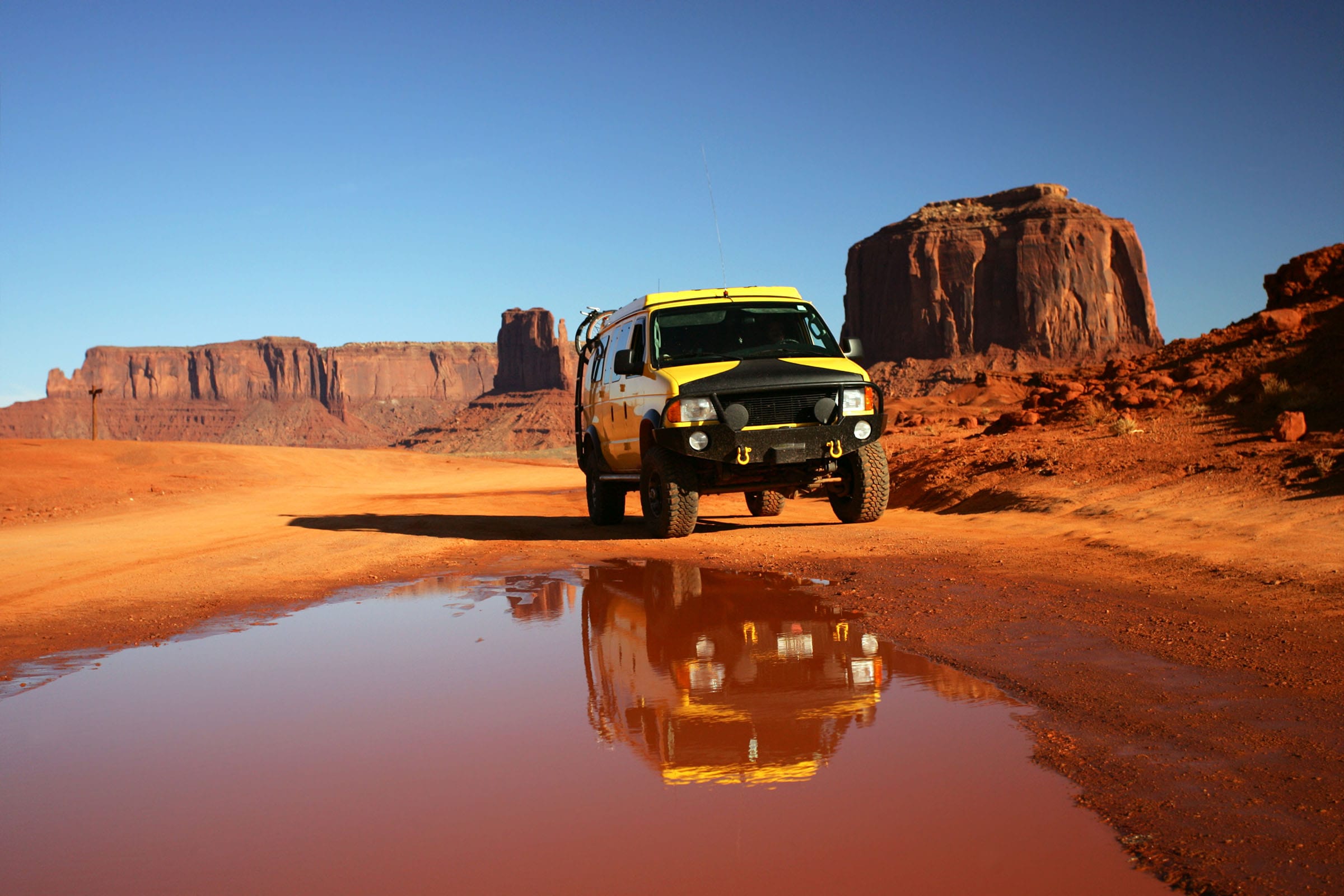
Vehicle modifications
Overland vehicles can often be identified by modifications like a skid plate, snorkel or winch, but the most useful upgrades are often less obvious.
All-terrain tires
When it comes to vehicle upgrades, proper All-Terrain tires should be at the top of any overland wishlist. Besides improving grip and handling, AT tires are more puncture resistant and durable. If you’re fitting out a mid to full-size truck or SUV, there are plenty of truck tires that will do the job, but if you have a crossover or smaller SUV, you will need to look for tires designed for a lighter vehicle. Also remember that your spare wheel needs to be the same size as the tires going on the vehicle (especially important for 4x4 and AWD vehicles).
Lift kit and suspension upgrade
Given that additional clearance can improve a vehicle’s off-road capabilities, some people might think that a lift kit would be the next most important performance-related upgrade, but a suspension upgrade can be just as important especially if a vehicle’s stock suspension isn’t designed to offer solid handling when the vehicle is carrying and additional 300 pounds of gear and accessories. You’ll need to do some research on your vehicle and the likely benefits of these upgrades before deciding whether the investment is warranted.
Truck cap
Most overlanders will need to fit a truck with a cap to get the most out of the vehicle. The best caps for overlanding have a three-door design that allows access to the entire load bay. Some of these, like the SmartCap made by RSI, allows for the addition of storage modules like shelves, slides and table clamps. These more high-end models are typically made of steel or aluminum, which is far superior to fiberglass since it allows for a more robust construction and better security (definitely a factor if your vehicle is going to be parked in areas where a breakin is a risk).
Drawer systems and cargo slides
Besides the storage modules that are designed to bolt onto certain truck caps, there are also cargo slides and drawer systems that can be installed in just about any truck bed or SUV load bay large enough to accommodate them. Some drawer systems, like those made by Front Runner, are designed to hold a specific type of storage box. This kind of system optimizes space and allows you to load and unload gear quickly. Cargo slides, on the other hand, are typically used to hold a fridge or other large item that you want easy access to.
Roof rack
Roof racks are almost ubiquitous in the overlanding world, but that doesn’t mean that you need one. Yes, they allow you to carry gear that might otherwise take up space in your vehicle’s cab or bed, but having too much gear on top of your vehicle can also have a negative impact on its handling and fuel economy. Of these two factors, handling is the most important for most overlanders, and experienced drivers know how much gear they can put on their roof racks before they start to feel it in their vehicle’s handling. On the plus side, roof racks also allow for the attachment of sun shades and shower curtains among other accessories.
Dual battery system
The main purpose of a dual battery system is to power a fridge and other accessories, but a second battery can also be used to start your vehicle if your starting battery is accidentally run flat. The components of a dual battery system can vary greatly depending on your needs. In addition to a deep cycle battery and an isolator or battery management system, you might also need a 12V inverter if you’re going to power a laptop or camera charger, or a solar charger if there will be times when you don’t do enough driving to charge your batteries with the alternator.
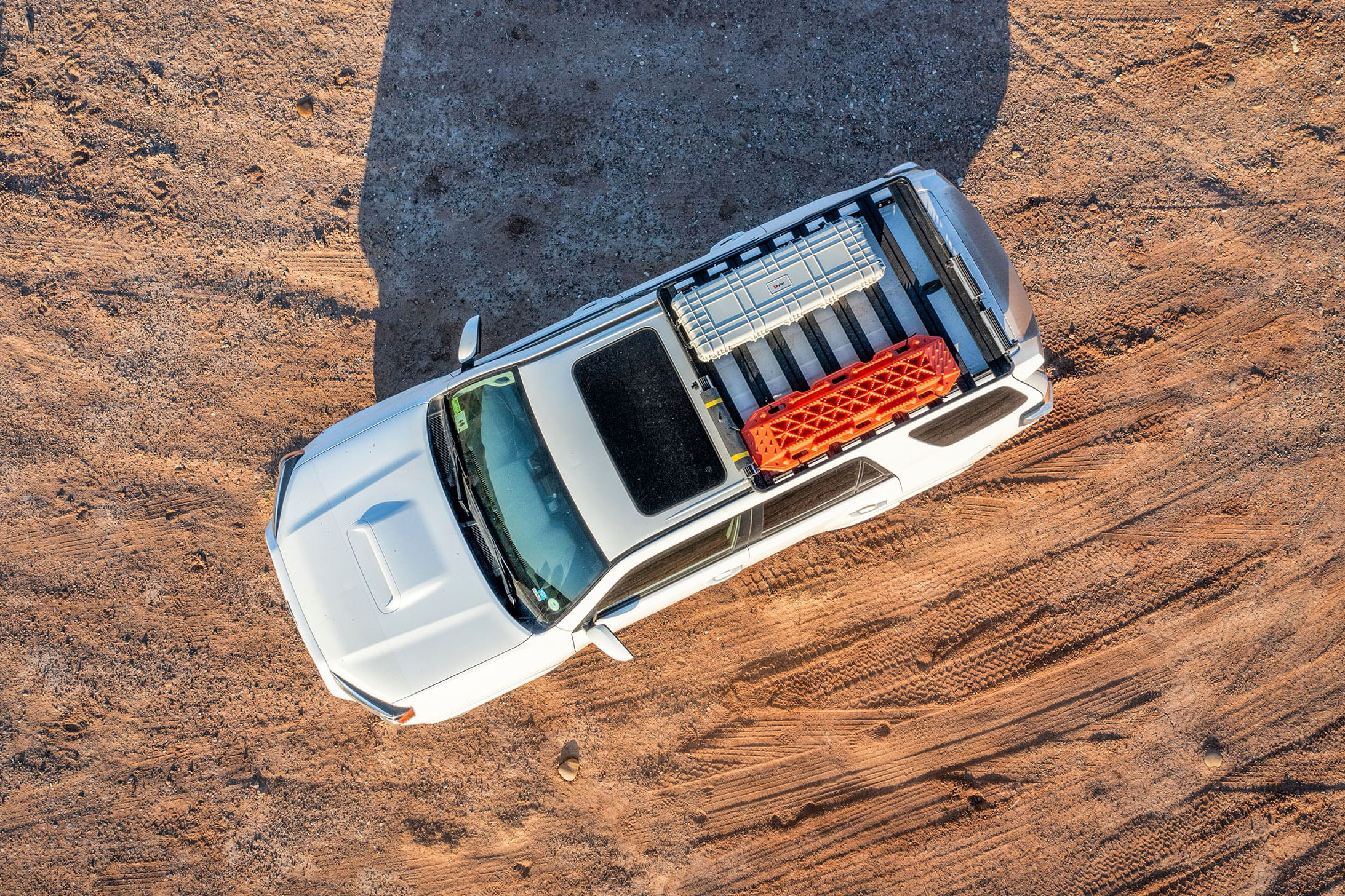
Essential gear
It would take a whole article to list everything an overlander might carry with them, but there are at least several essentials worth mentioning here.
Recovery kit, tools and spares
The items in a recovery kit can vary greatly depending on the terrain. At the very least you will need a tow strap and shovel (also useful for digging latrines), and if you plan to do a lot of driving in sand, you should also carry sand ladders and a compressor, which will allow you to deflate and inflate your tires. In addition to these, you’ll also need to carry the tools and spares needed to attend to common mechanical problems: tire repair kit, fuses, electrical tape, oil ect. It would be helpful to figure out what repairs are most likely with your vehicle and the kind of terrain you will be driving, and then pack the tools and parts needed to fix them.
Jerry cans
There was a time when metal jerry cans were used for storing both water and fuel, but today overlanders are more likely to use plastic cans for storing water. These come in different shapes and sizes, but to be suitable for storing water, a can should be made from food-grade BPA-free plastic. Something else worth thinking about is where your water container will stored while you are driving. If you plan to have it on your roof rack, there should be some way to secure it to the rack. For example, Front Runner’s water tanks can be secured to their roof racks using a bracket that wraps over the top of the can.
Storage boxes
A well organized packing system can make your whole setup more space efficient and allow you to access your gear more easily. For this purpose, some robust and stackable storage boxes are indispensable. Besides simply storing your kit, these boxes should also work with the rest of your system by fitting into drawers or be compatible with roof rack mounts. Front Runer’s Wolf Pack Pro – possibly the most popular option here – comes with both flat and raised lids and can be fitted with cut-to-size foam dividers to protect and help organize gear.
Fridge
There are two ways to keep perishables cold: with a cooler or a fridge. While a cooler can keep your food cool for up to three or four days if properly packed and chilled, the hassle of having to drain water and add fresh ice gets old very quickly. This is why most overlanders opt for a portable fridge/freezer. Besides ensuring that your food stays chilled, a fridge also negates the risk of soggy vegetables – something that can happen if you forget to drain a cooler. Some overlanding gear manufacturers make fridge-specific slides that can be fitted into the back of a truck or SUV to make a fridge easier to get into.
Stove and camp kitchen
You could use a butane/isobutane backpacking stove, but a camping stove with a refillable propane tank will cost you a lot less in the long run since the fuel is much cheaper. Camping stoves like the Coleman Cascade are also more stable, and they usually have at least two burners, which gives you options if, for example, you want to make a sauce while you cook pasta. Some butane canister stoves can be converted to run on single-use propane cylinders, which, although not as cost effective as a stove with a refillable cylinder, can lower your fuel costs if you don’t want to buy a second stove.
Tent and sleep system
Unless you plan to sleep in your vehicle, you will need either a rooftop tent or some kind of freestanding tent. Rooftop tents have their allure, but they are not without their downsides. They don’t set up that much faster than a dome tent, and they have to be taken down before you can drive anywhere. On the plus side, you don’t need to worry about finding a suitable tent site when using a rooftop tent – you just need to make sure that you can park on level ground. Rooftop tents also come fitted with their own foam mattresses, whereas regular tents require a separate sleeping pad or mattress. Foam mattress are generally more comfortable and durable than air-filled pads, but they also take up more space when rolled up.
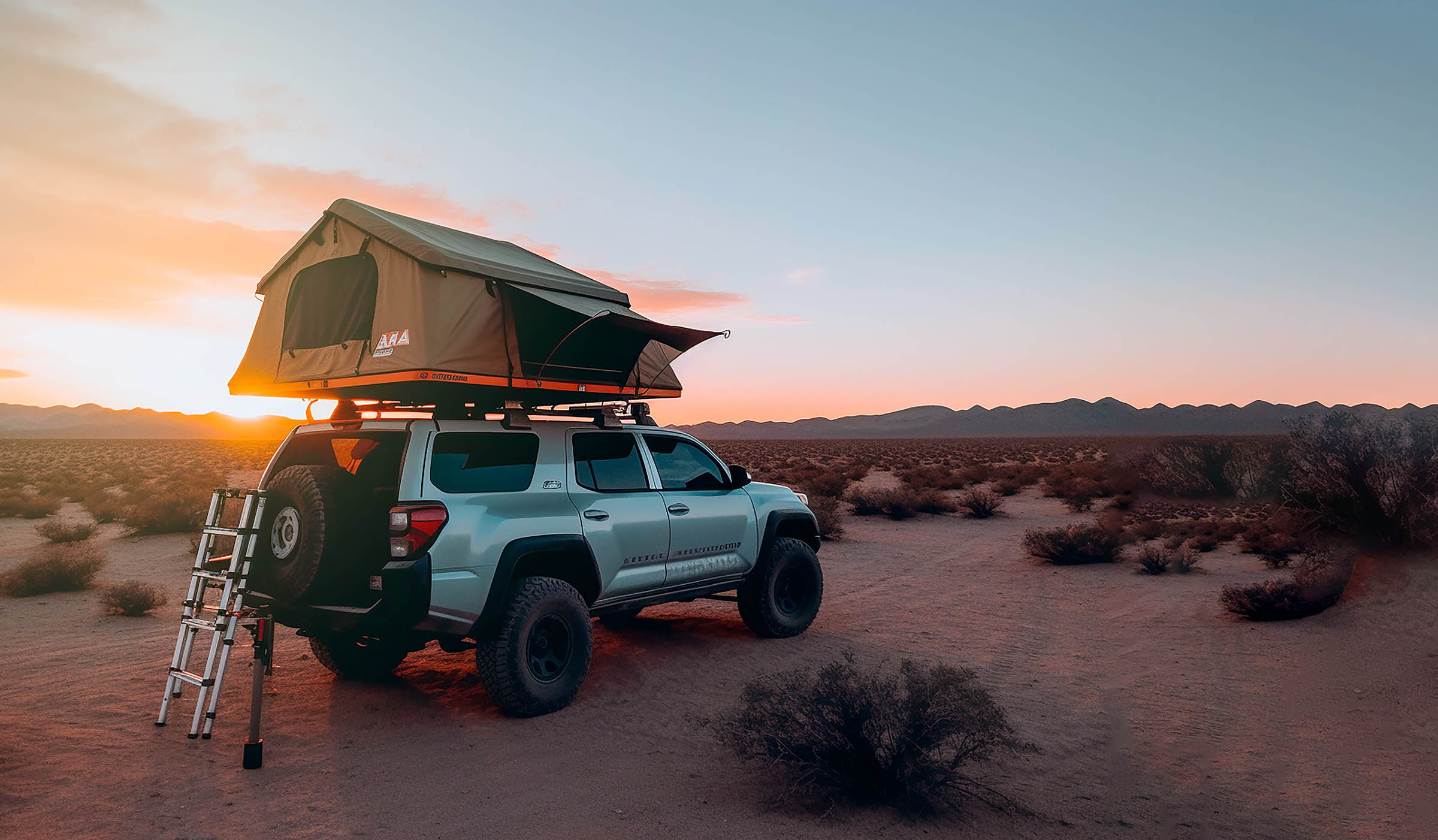
Learn more
Hopefully that’s everything you need to convince you to try overlanding, in which case the next step is learn more about how to choose gear for overlanding and how to plan your first overlanding adventure. I plan to cover these in future articles, but in the meantime, I have several articles on related topics like the pros and cons of roof top tents and how to pack a vehicle for a big trip. Happy exploring.
